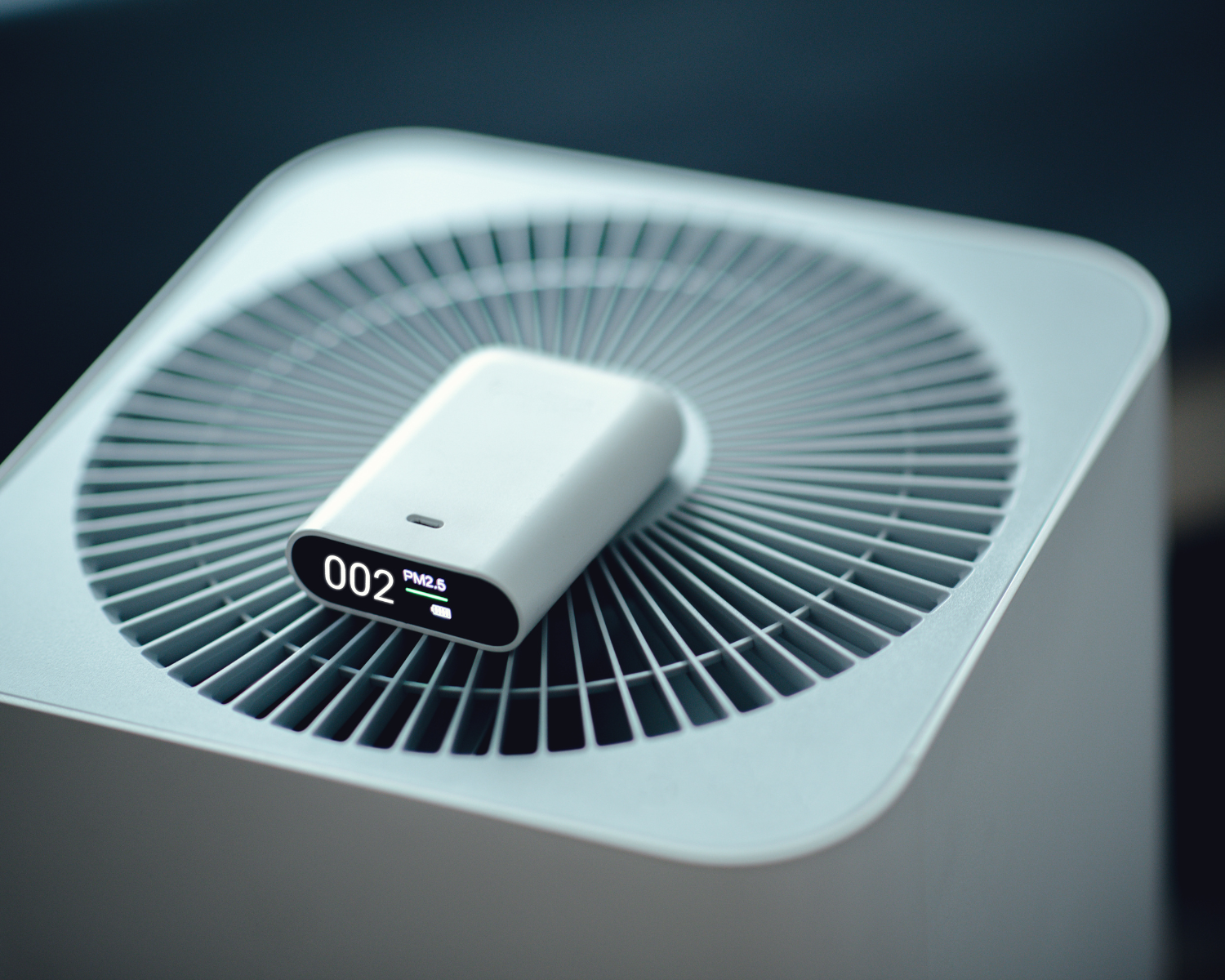Air pollution is no longer a distant, invisible concern. Both outdoor and indoor air pollution are immediate health issues which are becoming clearer to us with time. Outdoor air pollution is perceptible through reduced visibility and respiratory distress, while poor indoor air quality (IAQ) reveals itself through a multitude of visual, audible, tactile, and health cues. In such a scenario, the importance of air quality monitoring companies cannot be overstated.
The global air quality monitoring market
The global market for air quality monitoring is likely to witness a steady upward trajectory in the years to come. A market report by Mordor Intelligence reveals that the air quality monitoring market is expected to be worth US$ 5.08 billion in 2024, with a projection that it will grow at a CAGR of 5.79% to reach a value of US$ 6.73 billion in 2029. Asia-Pacific is the largest market for air quality monitoring companies – hardly surprising, with 17 of the world’s 25 most polluted cities located in this region, and India taking the cake with 9 of its cities finding spots on this list. The Asia-Pacific region is also the fastest growing market, with growing rates of urbanisation and industrial activity here calling for more innovation from air quality monitoring companies in India and beyond.
Many top air quality monitoring companies are involved in outdoor air quality monitoring, which monitors and measures the air pollutants released by industrial, construction, vehicular, and other activities affecting ambient air. Legislation in various countries to track ambient air quality and control emissions is giving a much-needed push to this segment of the industry. Nonetheless, the overall market for air quality monitoring includes some other categories as well. The market can be segmented according to product type (indoor or outdoor monitor), sampling method (continuous, intermittent, manual, or automatic), end user (residential, commercial, power generation, petrochemical industry, etc.), and geography.
Top air quality monitoring companies
Based on 2023 and 2024 market share reports, Mordor Intelligence has also identified the brands that are at the forefront of the global air quality monitoring industry. Overall, the market is quite fragmented, with no dominant players claiming the lion’s share of the market. Some of the leading players include Siemens AG, Thermo Fisher Scientific Inc., Horiba Ltd., Emerson Electric Co., 3M Co., Hawa Dawa GmbH, Honeywell International Inc., Teledyne Technologies Inc., TSI Inc., Merck KGaA, and Agilent Technologies Inc.
What not to do: A lesson for air quality monitoring companies looking to make it big
The lack of a clear market leader has made it evident that there is no definite recipe for success in becoming one of the top air quality monitoring companies in India or elsewhere. Nevertheless, there are certain lessons to be learnt about what not to do – one of which concerns the integration of air purifiers and air quality monitors.
Several air purifiers available in the market include built-in air quality monitors. While this combination of two products may seem like an attractive offer, there are several reasons – for both consumers and air quality monitoring companies – to avoid such integration.
- Sensor quality: When your air quality monitoring technology is not the showstopper of your product, it is natural that its quality will take a backseat, especially when cost concerns come into the picture. It is always better to keep air purifying and air quality monitoring systems separate – this will allow you to not only focus on quality but also help you customise your offerings more easily.
- Limited monitoring range: Due to limitations with regard to sensor placement, air quality monitors built into air purifiers generally only monitor and measure air quality near the purifier. Since this air is likely to be the cleanest in the room, measurements from integrated monitors do not necessarily represent the air quality in your entire space.
- Limited sensor types: Integrating multiple functionalities into a single device is an unnecessary challenge – this is evident in the fact that a large number of combined purifiers + monitors made by air quality monitoring companies only measure PM2.5 levels. On the other hand, companies focusing primarily on IAQ monitoring have greater freedom to include sensors for PM1, PM2.5, PM10, volatile organic compounds (VOCs), CO2, SO2, temperature, humidity, and other atmospheric conditions associated with indoor air quality.
- Inflated product price: Even while it is tougher for an integrated air quality monitor to provide all the functionalities that a dedicated monitor provides, it inflates the price of air purifiers by adding extra features.
Nice-to-haves: Innovations being developed by air quality monitoring companies
Between 2019 and 2025, the UK government intends to invest £42.5 million in research and innovation relating to clean air. Under its Strategic Priorities Fund programme, Innovate UK funded a series of pilots to advance new technologies by air quality monitoring companies. Of these, three received further funding to produce, test, and optimise prototypes of products ready to be commercialised. Here are the innovations highlighted by the top air quality monitoring companies in the programme:
- A project led by arbnco and partners comprised a monitor with sensors for multiple household pollutants, a smartphone app, and an alert system.
- Applied Nanodetectors developed a home-based IAQ monitoring system to identify pollution sources accurately and provide actionable suggestions.
- Nooku, meanwhile, focused on a cost-effective and interactive solution for families.
The top air quality monitoring companies in India
In India, Dew Point’s IAQ monitoring solutions are unparalleled. In partnership with Kaiterra, Dew Point is one of the few air quality monitoring companies in India that provides low-carbon solutions in air quality surveillance. Dew Point’s solutions stand out because of how centred they are on the user experience. With the only dashboard in the world which actively improves your air, you can manage, compare, analyse, and automate your IAQ solutions all in one place. Add to this the credibility that comes with full compliance with green building and air quality standards – including WELL certification, LEED certification, Fitwel certification, and more – and we have a clear winner among the top air quality monitoring companies in the market. Still, this is not all: Dew Point and Kaiterra monitors have a unique and crucial “remove and replace” feature for sensors, allowing you to circumvent the logistical nightmare of transporting your device elsewhere regularly for sensor calibration.
The final word
While there are no clear leaders in terms of global market share, Kaiterra stands out in terms of compliance, innovation, and human-centred design. Its real-time, continuous IAQ monitoring system – paired with a unique dashboard, excellent data management and ease of certification – makes Kaiterra and Dew Point your go-to partners for energy-efficient indoor air quality monitoring across India.




Leave a Reply